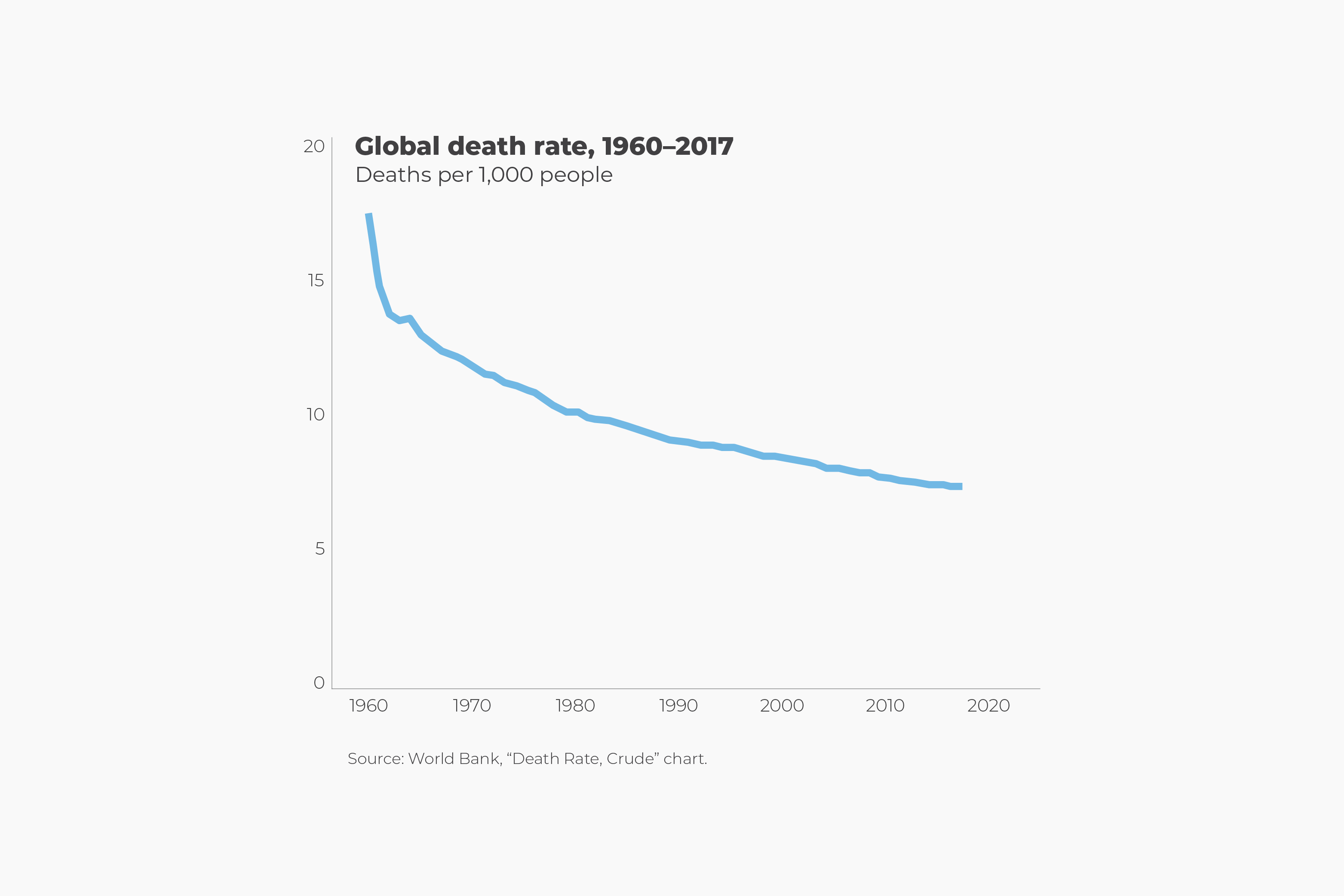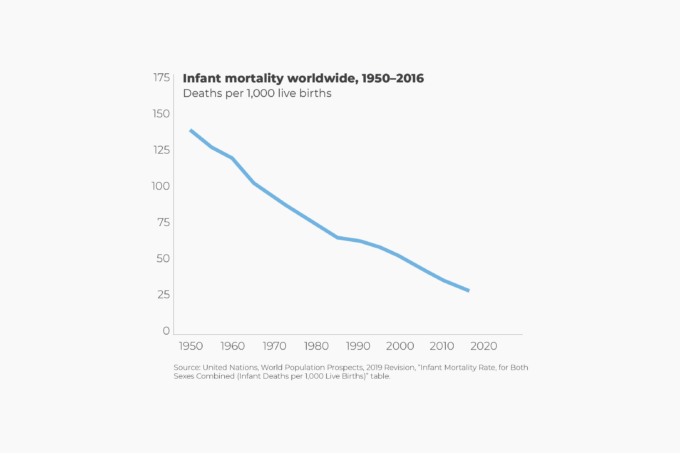The Four Horsemen of Pestilence, War, Famine, and Death usher in the Apocalypse in Christian tradition. As documented in this volume, deaths from infectious diseases are way down; wars are rarer and kill fewer people; and malnutrition has steeply declined. Finally, the crude annual death rate is a common way to benchmark the toll of mortality. And by that measure, it turns out that death itself is also in retreat.
Historical data suggest that the annual crude death rate in England and the United States was approximately 25 per 1,000 residents in 1800. That is, about 25 people out of every 1,000 in a community would die each year. By 1900, the crude death rate in the United States had dropped to 17 per 1,000 residents. In 1900, nearly one-third of deaths in the United States were due to infectious diseases, such as tuberculosis, typhoid, pneumonia, and diphtheria. By 2014, deaths from infectious diseases had fallen to only about 5 percent.
According to the World Bank, the global crude death rate stood at 17.7 per 1,000 in 1960 and has fallen to 7.6 per 1,000 in 2016. Because of declining infant mortality rates, the crude death rates for some less developed countries with more youthful populations are lower than those found in more developed countries with older populations. The reason is that rich countries have a higher proportion of older citizens who are drawing closer to the end of a longer life.
For example, the average age of Costa Rica’s population is 31 years, and that of Oman is 29 years, and their corresponding crude death rates stand at 4.9 and 2.5 per 1,000, respectively. In contrast, the average age in the United States is 38 years and in France is 41, and their crude death rates are 8.4 and 8.8 per 1,000, respectively.







